Close your eyes and imagine yourself on an island full of beautiful greenery. The calm wind is blowing your hair, sand is tickling your toes, and you are lying on a hammock and sipping a favorite cocktail, even waves are not in the mood to disturb you with its sound. And here you wake up(sorry to wake you from dreaming). Since we are not capable of transporting you such paradise, but we can suggest something by which you can create paradise at home.
Don’t worry, we won’t give you a trick, but we are here to guide how to convert your home into a paradise. Tropical leaves are the best way to bring outdoor paradise inside. It becomes impossible to choose one tropical plant as it got a plethora of options.
So, without wasting a single moment, let’s delve into types of tropical house plants:
Amazon Elephant’s Ear
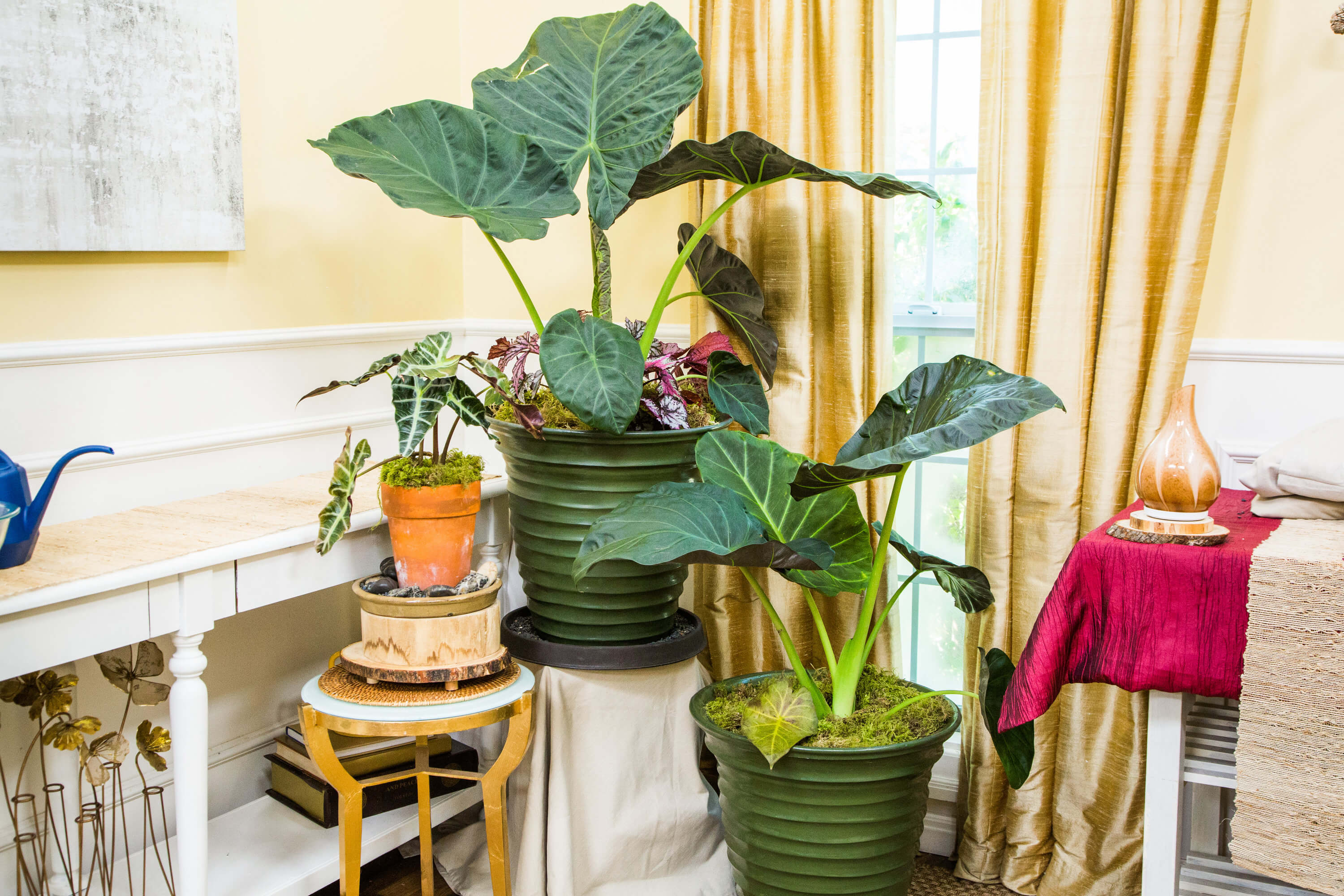
Amazon elephant’s ear is a popular ornamental house plant with unique and regal features. It has got large and arrow-shaped leaves with silver color veins. This green beauty has been known to flower but rare. Sometimes it becomes dormant, but it comes back, you just to keep patience.
The plant needs demanding maintenance, partial shade, and warm temperature to grow into a healthy plant. One should use slightly acidic and nutrient soil for healthy growth.
People in Vietnam used it as a herb, and it is a heavy fertilizer feeder during the growing year. For best foliage development, keep it under-potted, and repotting needs to be done annually. To keep it away from moist and bacterial problems, clean the plant with a damp cloth.
Whether you want to buy, sell or simply reach out to other plant enthusiasts, buy plants online is the right place to be.
Basic Details
| Botanical Name | Alocasia |
| Ideal temperature | 18-24ºC (65-75ºF) |
| Light | Bright light but not direct sunlight |
| Water | Less amount, but keep moist |
| Height(Max growth) | 1-2 ft |
| Pet-friendly | No, Poisonous for cats and dogs |
The Bird of Paradise

Bring beauty to your home with the bird of paradise. It is one of the most popular plants across the world and its large and gaudy flowers create a striking presence in the room. Perfectly blended with the array of blue and orange plumage and its flower last for a week. You can expect the plant to bloom after 5 years of age. Keep this plant in a sunny spot in winter to give the required light and one of the reasons for the mature plant not to bloom is due to insufficient light.
Basic Details
| Botanical Name | Strelitzia reginae |
| Ideal temperature | 21-32ºC (70-90ºF) |
| Light | Indirect and bright sunlight |
| Water | During summer it needs regular water |
| Height(Max growth) | 6ft outside and 3ft indoor |
| Pet-friendly | Mildly toxic for cats, dogs |
Monstera Deliciosa
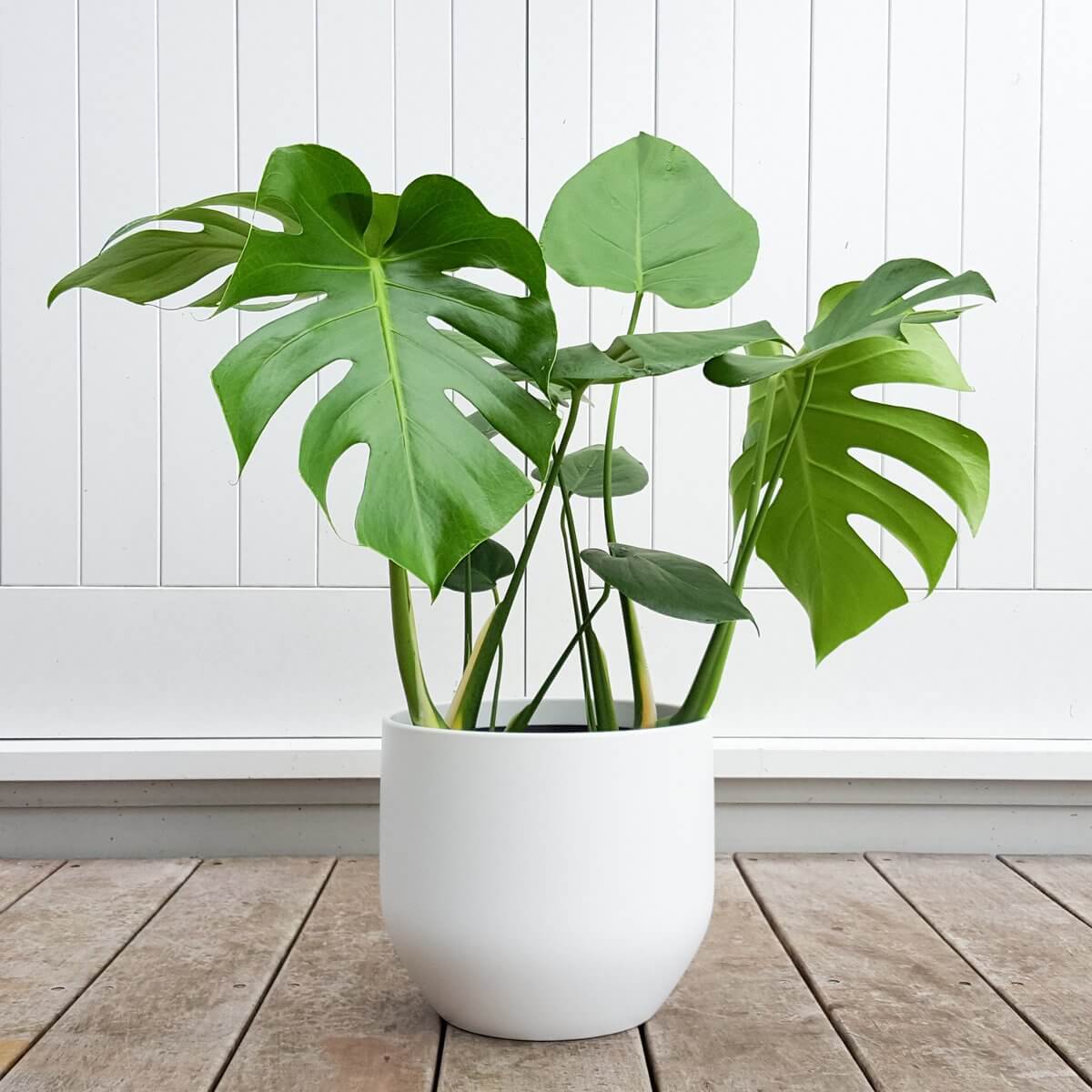
Known as the Swiss cheese plant, Monstera Deliciosa is a beautiful element to lighten up in your living space aura. The monster size leaves to make it stand out of the crowd. This plant requires low maintenance but it needs sufficient space as its giant leaves are not compatible in small living space. Plant’s Leaves with large holes are unique to attract attention. The plant produces fruits as well as flowers.
Basic Details
| Botanical Name | Split-leaf philodendron |
| Ideal temperature | 20-30ºC (68–86 °F) |
| Light | Prefer indirect sunlight |
| Water | Water when the top layer of soil is dry |
| Height(Max growth) | 10 ft |
| Pet-friendly | Toxic for cats, dogs |
Fiddle Leaf Fig

Bring the gorgeous fiddle leaf fig to add the beauty of your living space. Shiny and green plant coupled with the unique shape, makes it an excellent choice for the entertainment section.
Make sure to rotate the position to provide a sufficient amount of light. For better growth and shiny leaves, make sure to wipe its leaves once a week. Make sure to avoid too much exposure of sunlight as it will dry out the leaves.
Brown edges of the leaves indicate that the plant is overwatered while brown spots indicate underwatered to the plant. Fiddle plant needs total care for proper growth, but this beautiful plant is worthy of all time and maintenance.
Basic Details
| Botanical Name | Ficus lyrata |
| Ideal temperature | 65-75°F |
| Light | Indirect light |
| Water | Water after the soil gets dry |
| Height(Max growth) | 10 feet |
| Pet-friendly | Mild toxic for pets |
Philodendron
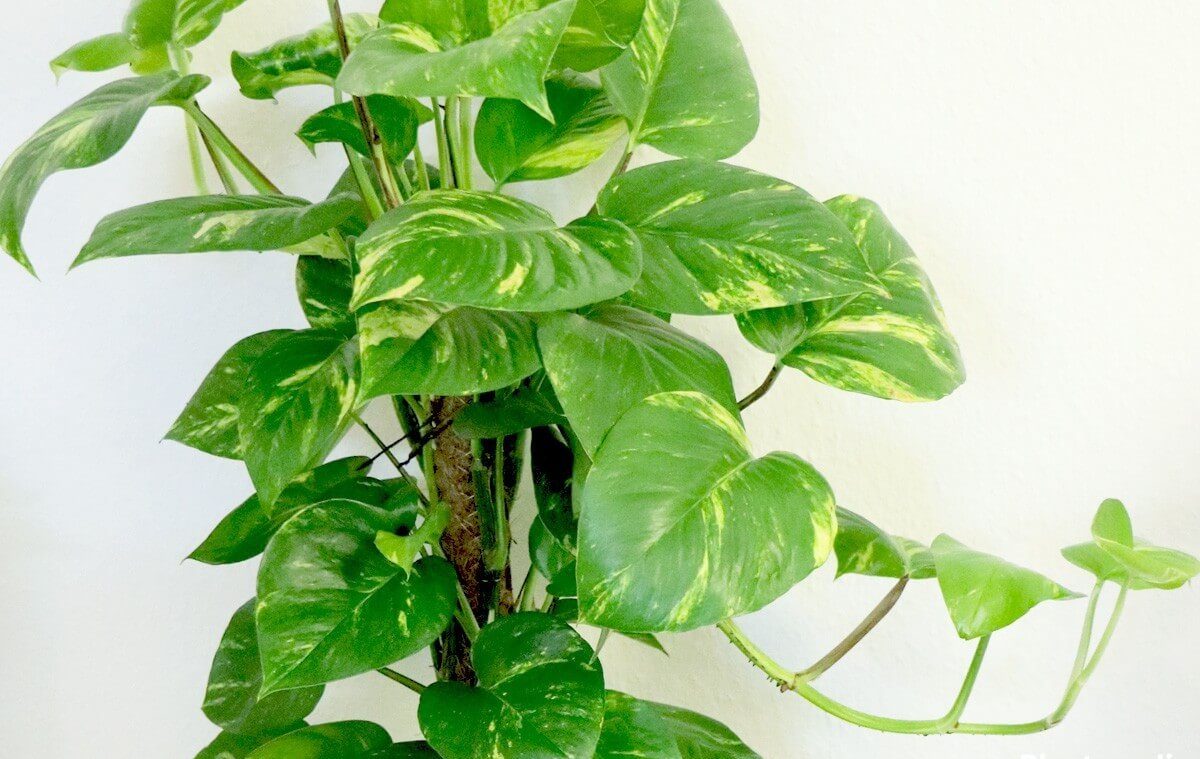
Nothing can beat the beauty of Philodendron in the living area, as it seems that it is meant to be there only. Its glossy leaves and small height make it stand out of the crowd.
This glossy plant takes low maintenance and highly recommended for decoration purposes. Make sure to give it sufficient space so that it can grow fully. The ideal time for repotting is early summer for full growth and don’t fertilize it for the first two weeks.
This plant is often confused as Monstera deliciosa or pothos vine.
Basic Details
| Botanical Name | Philodendron bipinnatifidum |
| Ideal temperature | 20-23ºC (68–74 °F) |
| Light | Partial sunlight |
| Water | Medium moist is required |
| Height(Max growth) | 8 ft |
| Pet-friendly | Toxic to pets and human beings |
Parlor Palm

Its botanical name is chamaedora elegans. There are many reasons to bring parlor palm for the foyer space. Adaptivity for lower light, low temperature, and beautiful look make it irresistible for your buying tropical plant for your home.
It is a perfect match for tabletop decorations, terrariums, and other small space decorations. Parlor palm is highly sensitive to over sunlight and water, as these two can put obstacles in its growth.
While doing its repotting, make sure to be extra careful as its roots are fragile. The plant is not clumping in nature, but one can use clumps to give an aesthetic appearance. It is a popular choice for decor in temperate countries.
Basic Details
| Botanical Name | Chamaedorea Elegans |
| Ideal temperature | 18-27ºC (65–80 °F) |
| Light | Low light |
| Water | Water large amount during the growing season and gradually reduce the quantity. |
| Height(Max growth) | 2 to 6 feet tall |
| Pet-friendly | Non-toxic to pets |
Croton

Croton is also known as the garden corton, is easy to grow. This plant is got unique traits like it does not like to move, and when you do so, it shed its leaves aways. This plant has got the reputation of being fussy, but still, it turns out to be one of the best tropical plants for indoor purposes.
The colorful plant with shiny leaves is ideal for glittering your living space. This plant loves direct sunlight at least six to eight hours for proper growth.
It is highly vulnerable to fungal and bacterial problems, so it becomes necessary to keep it clean and away from small pests.
Basic Details
| Botanical Name | Codiaeum variegatum |
| Ideal temperature | 15-21ºC (60–70 °F) |
| Light | Direct sunlight |
| Water | Its soil needs to be moist all the time |
| Height(Max growth) | 3 ft |
| Pet-friendly | Toxic for pets and humans |
Dragon Tree
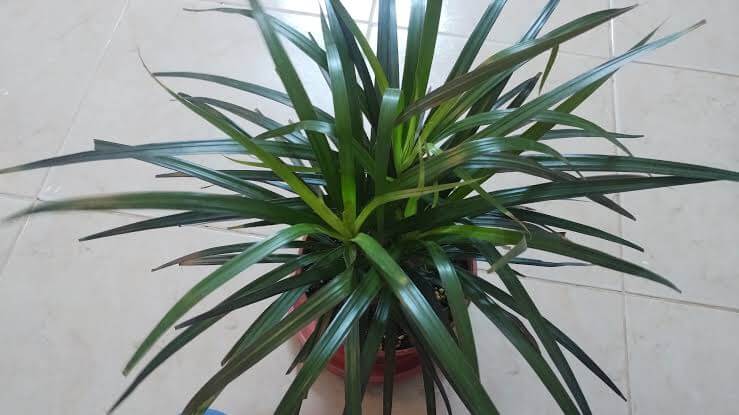
If you want a plant that needs minimum maintenance, then the dragon tree is your ideal choice for indoor. The colorful plant has got the green sword-like leaves with the red edge and slender gray stems. For the proper growth, make sure to wipe leaves with the damp cloth and away from pests.
Yellow leaves indicate root rot and in to maintain the quality, keep the soil moist in spring, and slightly drier in winter. In the indoor atmosphere, it hardly bears flowers and berries.
Even you can count its benefits like act as an air purifier, control respiratory distresses, improves focus, and improve the sense of stability. Repotting needs to be done every two or three years with the fresh soil for healthy and better growth.
Basic Details
| Botanical name | Madagascar |
| Ideal temperature | 18°- 24 °C (65°- 75°F) |
| Light | Bright light condition |
| Water | Keep the soil slightly moist |
| Height(Max growth) | 8 ft. |
| Pet-friendly | Toxic for dogs and cats |
Rubber Plant

If you wish to bring an indoor plant, but if your space lack sunlight then a rubber plant is the right choice. Rubber plant does not require natural lights, and it also helps to remove toxin formaldehyde found in the indoor. It acts as a beautiful centerpiece for your central table of the room.
This plant is easy to maintain and care by cleaning its leave with the damp cloth for a glossy appearance. If your plant is facing the problem of loss of leave, then the only reason for the sudden fall is overwatering.
Repotting is required after one year when the plant is young, and after that, it should be carried out after three years.
Basic Details
| Botanical name | Ficus Elastica |
| Ideal temperature | 15°- 24 °C (60°- 75°F) |
| Light | Bright light without direct sunlight |
| Water | Water after the soil becomes dry |
| Height(Max growth) | 10 ft. |
| Pet-friendly | Toxic for cats and dogs |
Snake Plant
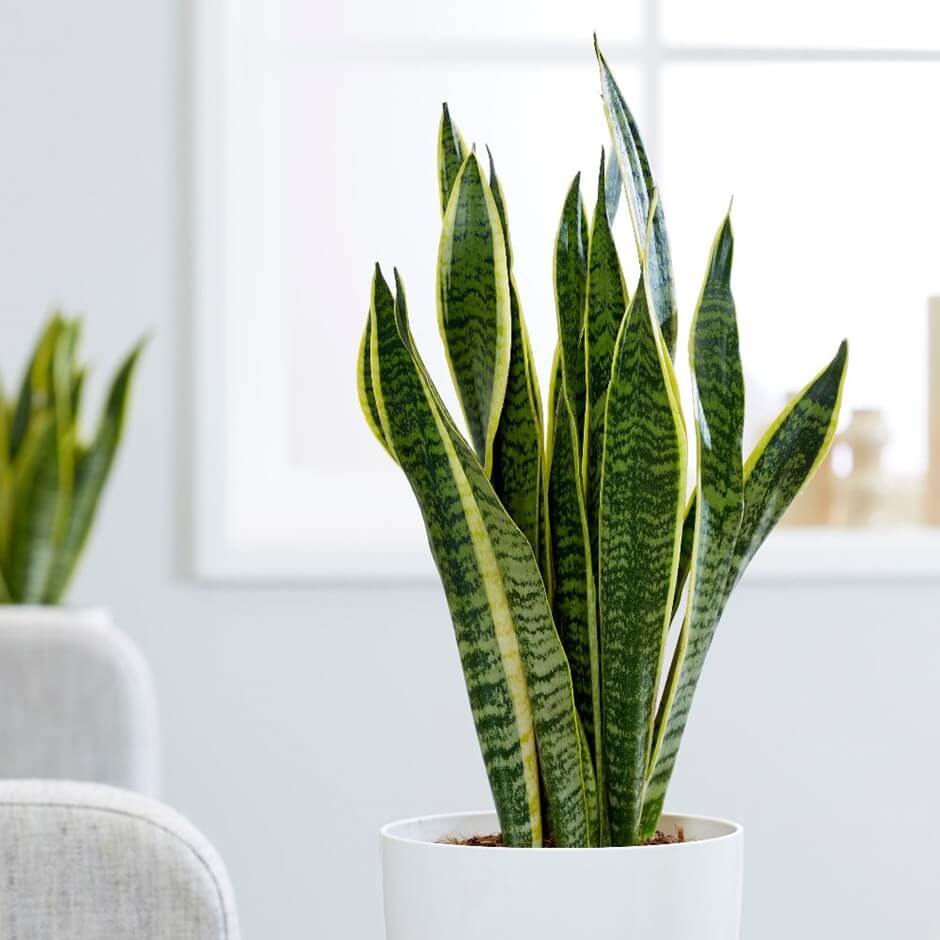
The snake plant is also known as mother-in-law’s tongue as it has got broad and long leaves. There are many beliefs related to the snake plant as the Chinese believe that if it is placed at the entrance, then eight virtues will pass through it and Africans used it for medical benefits.
Its leaves are dark green in color with white and yellow striping. People often place it in the bedroom as it helps to purify air quality and produces oxygen at night. It needs indirect sunlight as direct sunlight will burn off its leaves.
Originated from the arid desert, it does not require much water. Overwatering and exposure to cold are the main culprits to kill the plant. It’s stylish and low maintenance attracts it’s as ideal tropical house plants.
Basic Details
| Botanical name | Sansevieria |
| Ideal temperature | 13°–29 °C(55°–85 °F) |
| Light | Indirect sunlight |
| Water | Water to saturate the soil |
| Height(Max growth) | 1 or 2 ft. |
| Pet-friendly | Low-level toxicity |
Peace Lily
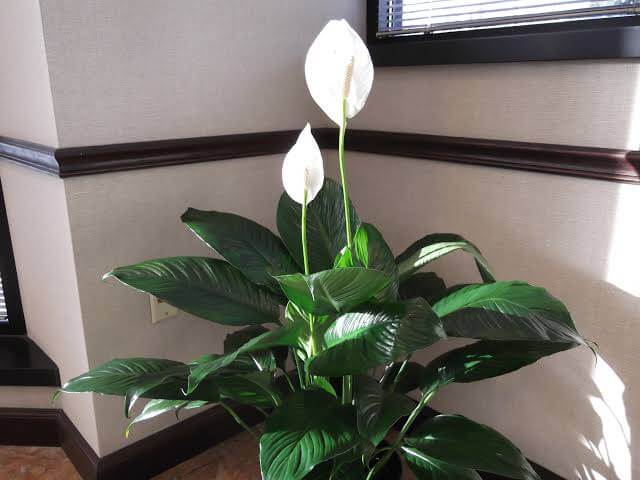
One of the most popular choices for indoor plant is Peace Lily, as they are easy to maintain and look lovely under the four walls. There are different varieties of a Peace lily, and smaller one looks fantastic on the tabletop. It not only adds beauty to the place but also acts as an air purifier.
Many people prefer it for a bedroom set as it fragrance the room and add beauty to the room. Despite its name, it is not a member of the lily family.
Keep it clean and free from pests is the best way to help it to grow into a healthy plant.
Basic Details
| Botanical name | Spathiphyllum |
| Ideal temperature | 18°–27 °C(65°–80 °F) |
| Light | Indirect sunlight |
| Water | Once in a week |
| Height(Max growth) | 4ft. |
| Pet-friendly | Toxic to dogs and cats |
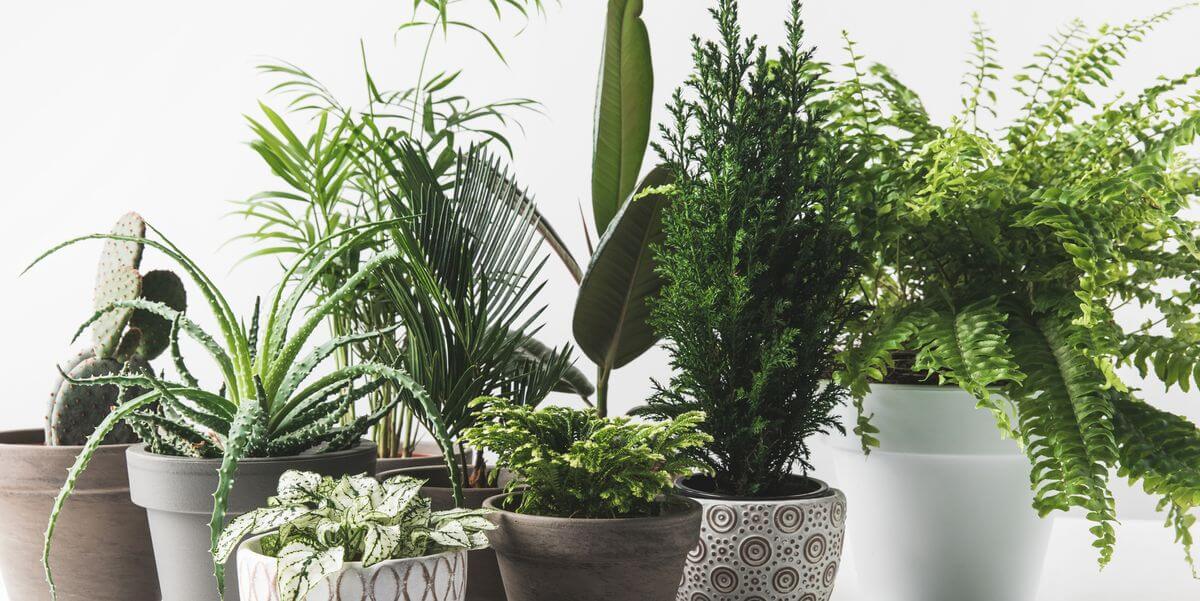
Conclusion
So, are you ready to invite these cute, little, but highly recommendable tropical plants for your indoor space? What do you think about these tropical house plants? With the right care, you can create your own green space in your area. So what are you waiting for? Go and buy these little yet powerful plants for your own green zone and keep reading ArchitectureIdeas for all such ideas and tips.
Read More:-

